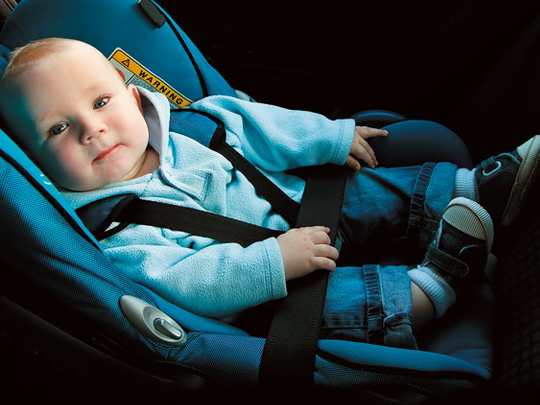
As a new or prospective father, you're likely to feel overwhelmed at some point; it's only natural when two become three or possibly more if you're rocking certain fertility treatments.
Setting aside the possibility of octo-fatherhood, perhaps the most common pressure point occurs at the intersection of heart and wallet. We all want the best for our kids but, ultimately we show this in different ways.
Whether or not you spring for a titanium clad euro-buggy with an iPod docking station and solar powered latte warmers, or simply recycle your sister-in-law's battered old stroller is a matter of personal taste and, well, personal finance. However, there is one instance in which, somewhat perplexingly, some parents are skimping, and that's the car seat. And by skimping, I mean don't actually own one.
Overpriced accessories don't really matter in the long run though, not compared to the safety of your child, which is a major concern for any parent. And there's good news here for the wallet too, as the extremely important bit, the car seat itself, can run as little as a few hundred dirhams.
Let's take a look at these incredibly important devices which, in the irrefutable language of public safety statistics, are clearly proven to save (tiny and heart-wrenchingly-precious) lives.
Infants
Infant car seats accommodate babies weighing as much as 9kg to 12kg, or measuring up to 70cm to 85cm in length (depending on the specific model.) Technically, you could spring for a convertible safety seat at this point, which will accommodate your baby longer for a longer duration. The equipment testing fanatics at Consumer Reports advise against this though, stating that "infant seats, by their design, tend to be more compact and secure infants better when compared to larger convertible models." Convertible, in this case, just means accommodating babies from infancy and beyond through various adjustments.
Back-seat droolers
Starting from baby's ride home from the hospital, he or she should ride in the back seat of the car, without exception. Carseat.org estimates that the risk of fatality is 30 per cent lower in the rear seat, which is all the impetus anyone should need.
Ever noticed that your car has a front passenger airbag defeat switch? Forget it even exists, because even with the airbag off, it is still much safer for your little one's safety seat to be installed in the rear of the car.
According to the American Academy of Pediatrics website, HealthyChildren.org, "Infants should ride rear-facing until they reach the highest weight or height allowed by their car safety seat's manufacturer. At a minimum, children should ride rear-facing until they have reached at least one year of age and weigh at least 9kg." Infant safety seats are the easiest to spot, as they're the smallest on offer, but make sure you check the specifications. This is because babies have soft, very vulnerable necks, and rear-facing car seats protect them from snapping forward in a collision.
Toddlers/pre-schoolers
OK, so if you did opt for a convertible car seat, then you need to adjust it for forward facing when your child meets the upper limit of its rear-facing specification. Check your car seat's literature to be certain. For a simpler solution, there are dedicated forward facing car seats, simply called child seats, which are designed for children weighing about 8kg and up. Additionally, make sure that your child is able to support his/her head before making the switch. By this point, baby is likely mobile, crawling (or walking) all over the place, keeping you constantly on your toes. If the fact that car seats save lives somehow isn't compelling enough on its own, consider this; the safety seat is the only time you can strap your child down without raising eyebrows.
School-aged children
Booster seats are for older children who have outgrown their forward-facing child seats. Basically, booster seats reposition the child's body so that it is positioned correctly against your car's built-in, adult seat belts. They're used until the adult belts fit correctly (when a child reaches about 4'9" (145cm) in height and is 8-12 years old).
Older children
Once your child graduates to the adult seat belts they should always use the lap and shoulder restraint, and should be consigned to the back seat until they reach at least 13. It may make you feel like a chauffeur to have them back there, but in fact, you are one until they start driving.
Al Nisr Media, publishers of Friday, e+, Aquarius, 4men, Property, InsideOut and wheels, has launched an awareness campaign to keep our children safe on UAE roads. The single biggest killer of children between the ages of two and 14 in the UAE is motor vehicle accidents, with 63 per cent of child deaths last year attributed to road accidents. Many of these deaths could have been prevented if children had been strapped into car seats or were wearing seat belts. Add your voice to our campaign. Sign up to our Click! Facebook fan page www.facebook.com/ClickCampaign or share your thoughts by emailing click@alnisrmedia.com. And remember, seat belts keep kids safe – so make sure your child buckles up today.








